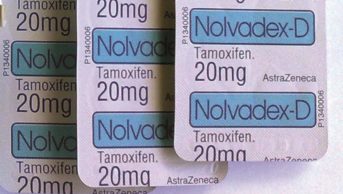
Shutterstock
Combined treatment with the antibiotic ceftriaxone and the proton pump inhibitor (PPI) lansoprazole can lead to an increased risk of drug-induced arrhythmia, a study has found.
The research, which used a combination of adverse event data-mining, electronic health record analysis and laboratory experiments, found that patients who received both drugs together were more likely to experience drug-induced long QT syndrome (LQTS), a potentially fatal condition, than those who received either drug alone.
The research team first used algorithms to trawl a database of 1.8 million adverse event reports collected by the US Food and Drug Administration to look for evidence of unexpected drug–drug interactions.
“These algorithms are similar to what technology companies like Google and Facebook use to target [advertisements] to users, except in our case we are attributing adverse reactions to drug combinations,” explains lead author Nick Tatonetti, an assistant professor of biomedical informatics at Columbia University in New York.
After accounting for confounding, the analysis identified a list of eight drug combinations not previously linked to acquired LQTS that produced safety signals, one of which was the ceftriaxone/lansoprazole combination.
The team then attempted to verify this signal using electronic health records for 382,221 patients who had undergone 1.6 million electrocardiograms between 1996 and 2014. Using these data, the researchers created three cohorts according to patients’ exposure to the drugs: those who had received both drugs within a seven-day period; those who only ever received ceftriaxone; and those who only ever received lansoprazole. They then compared corrected QT intervals for these patients that had been measured within 36 days of drug exposure.
The researchers found that the drug combination resulted in longer QT intervals in both sexes: by an average of 12ms in men and by 9ms in women. Additional stratification for race showed that the effect was greatest in white men and black women, with an average prolongation of 12ms for both groups.
A greater proportion of patients who received the ceftriaxone/lansoprazole combination had a QT interval of at least 500ms, a clinically relevant threshold. For example, 19.3% of men who received the combination surpassed this threshold compared with 14.2% of those receiving ceftriaxone only and 12.8% receiving lansoprazole only.
The researchers found further support for their findings in laboratory experiments. They used patch-clamp electrophysiology to examine the effects of the drugs on cells expressing the hERG channel. This channel is involved in the heart’s electrical activity and is frequently blocked by drugs that cause LQTS.
The team showed that, although ceftriaxone had no effect on the channel, when added in the presence of lansoprazole it resulted in a dose-dependent drop in current.
“Our data support the hypothesis that ceftriaxone and lansoprazole increase the risk of acquired LQTS in patients and that they do so through the hERG channel, an important ion channel in the heart,” says Tatonetti.
The researchers, who report their findings in the Journal of the American College of Cardiology
[1]
(online, 10 October 2016), note that both drugs would comfortably satisfy regulatory safety requirements for drug approval individually but, given the extent to which they were able to block the hERG channel, would be unlikely to receive approval if submitted to regulators as a combination.
Sean Hennessy, a professor of epidemiology at the University of Pennsylvania in Philadelphia, says that identifying drug-drug interactions is challenging because clinical trials often include patients who are younger and taking fewer medications than those who go on to receive the treatment in clinical practice.
Hennessy says the researchers’ approach – combining three independent types of data – shows promise as a way to prioritise drug combinations for potential interactions. The interaction between ceftriaxone and lansoprazole needs further examination, he adds. “I believe that the study raises a hypothesis that deserves to be confirmed or refuted, but don’t believe the evidence is strong enough at this point to be clinically actionable.”
References
[1] Lorberbaum T, Sampson KJ, Chang JB et al. Coupling data mining and laboratory experiments to discover drug interactions causing QT prolongation. J Am Coll Cardiol 2016;68:1756–1764. doi: 10.1016/j.jacc.2016.07.761


